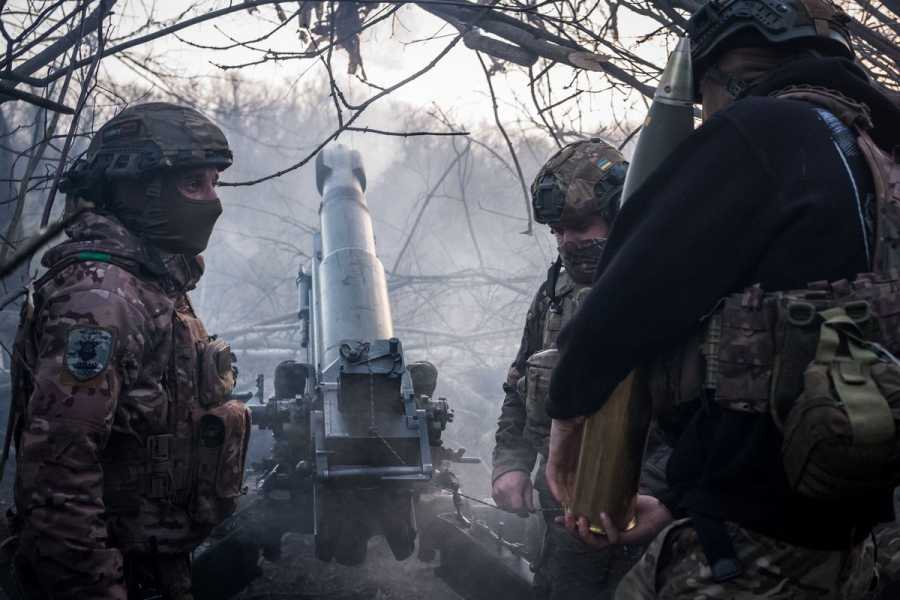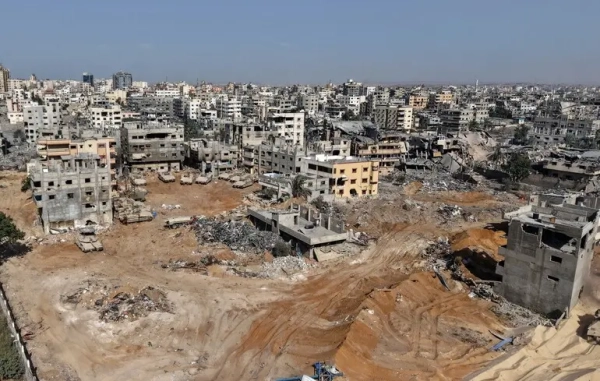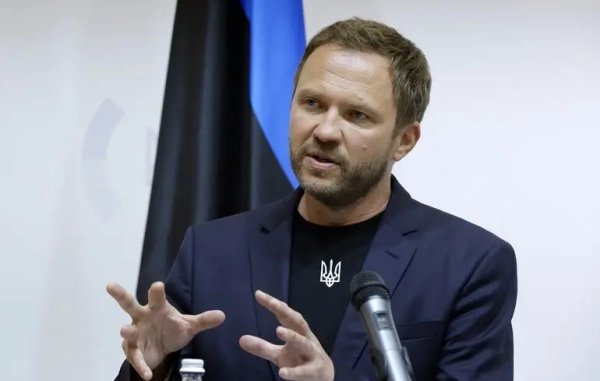New American weapons will buy Ukraine’s defenders some valuable time.

Ukrainian soldiers fire artillery near Siversk, in Donetsk, Ukraine, on April 1, 2024. Wolfgang Schwan/Anadolu via Getty Images Joshua Keating is a senior correspondent at Vox covering foreign policy and world news with a focus on the future of international conflict. He is the author of the 2018 book, Invisible Countries: Journeys to the Edge of Nationhood, an exploration of border conflicts, unrecognized countries, and changes to the world map.
Ukrainian forces are having their best week in months, and it’s coming not on the muddy battlefields of the Donbas, but across the Atlantic.
On Saturday, after months of delay, the US House of Representatives approved $61 billion in new funding for Ukraine, alongside aid packages for Israel and for US allies in the Pacific; last night, the Senate approved the package and sent it on to President Joe Biden. He said he’ll sign it today.
The new weapons can’t come soon enough.
During recent months, the tide has turned decisively against the Ukrainians on the battlefield as they have been forced to conserve artillery and air defense ammunition. Russia’s military has been firing as much as five times as many artillery shells as the Ukrainians, and one US commander recently warned that the advantage could soon be as high as 10-1. Farther from the front lines, Ukraine’s much-vaunted air defense systems —which once shot down around 90 percent of Russian missiles and drones — have become dramatically less effective, with disastrous consequences for Ukraine’s cities and infrastructure.
vox-mark
Sign up for the newsletter Today, Explained
Thanks for signing up!
Check your inbox for a welcome email.
Email (required)
Oops. Something went wrong. Please enter a valid email and try again.
By submitting your email, you agree to our Terms and Privacy Notice. You can opt out at any time. This site is protected by reCAPTCHA and the Google Privacy Policy and Terms of Service apply. For more newsletters, check out our newsletters page. Subscribe
Kateryna Stepanenko, a Russia analyst at the Institute for the Study of War, told Vox that Ukraine has lost an estimated 583 square kilometers (225 square miles) of territory since last October, when the US began reducing the size of its aid packages. This is not a huge amount of territory within Europe’s second-largest country, but more important than the actual ground covered was that the Russian advances forced the Ukrainians to “waste their precious resources on repelling Russian attacks rather than taking the initiative,” Stepanenko said.
“The delay in providing assistance to Ukraine cost us dearly,” Yehor Cherniev, a member of the Ukrainian parliament and deputy chair of its defense committee, told Vox. “Due to a lack of ammunition, we lost [the city of] Avdiivka and a number of small settlements, and also suffered significant human losses … All this could have been avoided if help had been provided on time.”
Now that help has been provided — can it stanch the bleeding?
Turning the tide, or buying time?
The Pentagon, which has certainly had ample time to prepare, reportedly has an initial weapons package ready for approval and deployment as soon as the funding comes through. While the administration has not yet announced what specific weapons will be sent, Reuters reports that the initial tranche may be worth as much as $1 billion and include vehicles, artillery ammunition, and air defense ammunition. Sen. Mark Warner (D-VA) has also suggested it could include long-range ATACMS missiles, a capability Ukraine has been asking for since the early days of the war but which the White House has been reluctant to approve due to concerns they could be used to strike targets inside Russia.
But more than two years into the war, will this aid really make a difference?
“Yes, this is enough to stabilize the front lines,” said Mark Cancian, a retired US Marine colonel and expert on defense logistics at the Center for Strategic and International Studies. “You’ll see almost an immediate battlefield impact.”
That’s no small thing considering the concerns expressed recently by observers in Ukraine that the country’s defenses could collapse entirely.
Franz-Stefan Gady, an analyst with the Center for a New American Security who recently returned from a study trip to the front lines in Ukraine, said the new aid package was likely to “restore a situation more akin to November 2023, when the Ukrainians didn’t have to make as many trade-offs” about which sections of the front line and targets in the rear they were able to defend.
The aid also comes in the nick of time, as Russia has been stepping up its strikes along the front line, likely ahead of new attempts to seize territory in the spring, when drier conditions will make it easier to maneuver military vehicles.
However, Gady cautions, “the package doesn’t address the most critical issue, which is manpower.” Ukraine’s front-line units have an acute shortage of infantry soldiers and the government has been reluctant to expand the use of conscription to refill their ranks. President Volodymyr Zelenskyy did sign a law earlier this month lowering the minimum conscription age from 27 to 25 (the average age of Ukrainian soldiers is over 40) but Russia, with its higher population and much higher tolerance for large numbers of casualties, is still likely to have the manpower advantage.
The optimistic view of the conflict for Ukraine is that new assistance will buy it much-needed time. It can hold the line this year and replenish units that were badly damaged in last year’s disappointing counteroffensive, hopefully putting it in a better position to push back Russia’s gains in 2025. By that time, Ukraine will have access to some new capabilities, such as F-16 fighter jets, and more importantly, the US and Europe will have ramped up their production of artillery ammunition, hopefully allowing the Ukrainians to narrow the Russians’ ammo advantage.
But there’s a difference between avoiding losing the war and actually winning it. No one expects this new aid alone to accomplish the latter.
“Okay, you’ve stabilized the front. Now what?” said Cancian. “The Ukrainians have to answer that question. What is their theory of victory?”
The Washington front
No one should expect a Russian collapse overnight. Even the most optimistic scenarios for Ukraine envision a long and costly war of attrition. Unfortunately, the lengthy and agonizingly difficult process of passing this aid bill suggests Washington may not be so patient.
If the new aid allows Ukraine merely to preserve a new stalemate on the battlefield rather than make significant gains, international pressure on Kyiv to negotiate with Moscow may grow more prominent. Ukrainian leaders will counter that they have no reason to trust that Russia will honor such a settlement.
As for Russia’s own calculations, the passage of the aid bill was an important signal to President Vladimir Putin that there’s still strong political support for Ukraine in the United States, even if it’s not quite as robust as it was two years ago. Of course, that could all change next year if former President Donald Trump, who would likely pressure Ukraine to give up territory to end the war, returns to the White House.
Ukraine and its allies have been reaching out to Trump and his allies in hopes of hedging their bets, and in a slightly positive sign for Kyiv, Trump ended up backing the new aid package after it was structured as a loan rather than a grant, an idea he had floated earlier.
But it’s safe to say that leaders in both Kyiv and Moscow will have to continue keeping one eye on America’s political climate even as they plot their next moves on the battlefield.
This story appeared originally in Today, Explained, Vox’s flagship daily newsletter. Sign up here for future editions.
Sourse: vox.com






